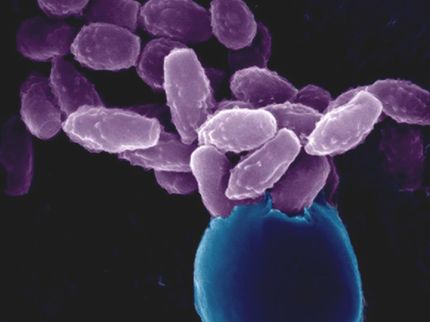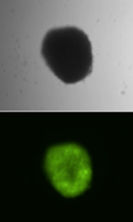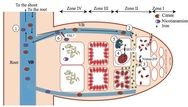'Jumping genes' unusually active in many gastrointestinal cancers, studies find
Advertisement
Results of studies done on human cancer tissue biopsies have added to growing evidence that a so-called jumping gene called LINE-1 is active during the development of many gastrointestinal cancers. The Johns Hopkins scientists who conducted the studies caution there is no proof that the numerous new "insertions" of these rogue genetic elements in the human genome actually cause cancers, but they say their experiments do suggest that these elements, formally known as transposons, might one day serve as a marker for early cancer diagnosis.
Collectively, the studies focus on insertions of a stretch of DNA - the LINE-1 transposon - that, as its name suggestions, can produce copies of itself that hop into new areas of the genome and may interrupt normal DNA sequences.
This particular genetic interloper, the investigators say, has been in the human genome for so long that an estimated 17 percent of it is made up of LINE-1 copies, the vast majority of which are now "rusty hulks" of their former selves, unable to move at all. A few, however, are still mobile. Summaries of two of the studies appeared online Aug. 10 in the journals Nature Medicine and Genome Research, and a report on the third appears in the Proceedings of the National Academy of Sciences.
Researchers previously reported cases in which new LINE-1 insertions disabled cancer-fighting genes inside tumors, but no one knew how common it was for jumping genes to play a role in cancer development, says Haig Kazazian, M.D. , professor of molecular biology and genetics at the Johns Hopkins University School of Medicine's McKusick-Nathans Institute for Genetic Medicine, who participated in two of the studies. "A challenge we had to overcome to begin to answer that question was detecting new copies of LINE-1 when the human genome already contains so many - it was like finding a needle in a haystack," he adds.
After Kazazian and then-graduate student Adam Ewing devised a method to find LINE-1 insertions using powerful genetic sequencing technology, the two worked with research fellow Szilvia Solyom, Ph.D., and other colleagues to analyze the insertions in several types and stages of gastrointestinal cancer tissues biopsies. They compared the DNA insertions they found in colon, pancreatic and gastric cancer to those in healthy tissue from the same people. Results showed that new insertions of the still-mobile LINE-1 transposons tended to occur early in cancer development, Solyom says
In the study that appears in Nature Medicine, researchers led by Kathleen Burns, M.D., Ph.D. , an associate professor of pathology at Johns Hopkins, homed in on LINE-1 insertions in pancreatic cancers. Using tissues from autopsies of 22 people with pancreatic cancer, they compared insertions in normal tissues, primary tumors and metastases. Of these, 21 of the cancers had LINE-1 insertions that were not present in the patients' healthy tissue, Burns says, and there tended to be more insertions in the metastasized tumors than in the primary tumors, indicating that the insertions are occurring concurrently with cancer progression.
In the third study, graduate student Tara Doucet in Kazazian's laboratory and others examined LINE-1 insertions in esophageal cancer and a condition known as Barrett's esophagus that is sometimes a precursor to cancer. They found new insertions in some, but not all of both patients whose Barrett's esophagus had not progressed to cancer after 15 or more years, and patients with both Barrett's esophagus and cancer.
"The key question is whether these insertions are driving cancer development or whether they are just a byproduct of cancer," says Kazazian. To help answer that question, his group hopes to analyze the genomes of individual cells to see whether most insertions seen in cancer cells also crop up in normal cells.




















































